
13 Ways of Looking at a Family: Maud Newton on the Imagery of Ancestors (Including Her Own)
Part Three in the “13 Ways of Looking” Series
Jumping off Wallace Stevens’s classic poem, “13 Ways of Looking at a Blackbird,” 13 Ways of Looking asks authors to show the visual inspirations for their latest projects, with accompanying background on how these images directly or indirectly influenced their book. Third in the series is Maud Newton, author of the memoir-history Ancestor Trouble.
–Rob Spillman
1.
I first encountered my friend Michael Aaron Lee’s “Forest #4 (Three Dee)” in 2015. The landscape seems ripped from a Nathaniel Hawthorne story, reminiscent of the woods the minister in “Young Goodman Brown” wanders, where Satan seems to lurk behind every tree. As in Hawthorne’s fiction, Lee’s hellish thicket might be an external landscape, but is more likely an internal one.
My partner and I acquired the painting from Michael in 2014, just before I started working on Ancestor Trouble as a book. One of my own ancestors was accused of being a witch in Puritan Massachusetts, well before the Salem witch trials, and over the years the painting and that legacy have become connected for me. The five foot by five foot canvas dominates a wall of my house, a reminder of the fears we humans carry with us collectively and individually, and the dangers of superimposing a fundamentalist worldview onto the world that surrounds us.
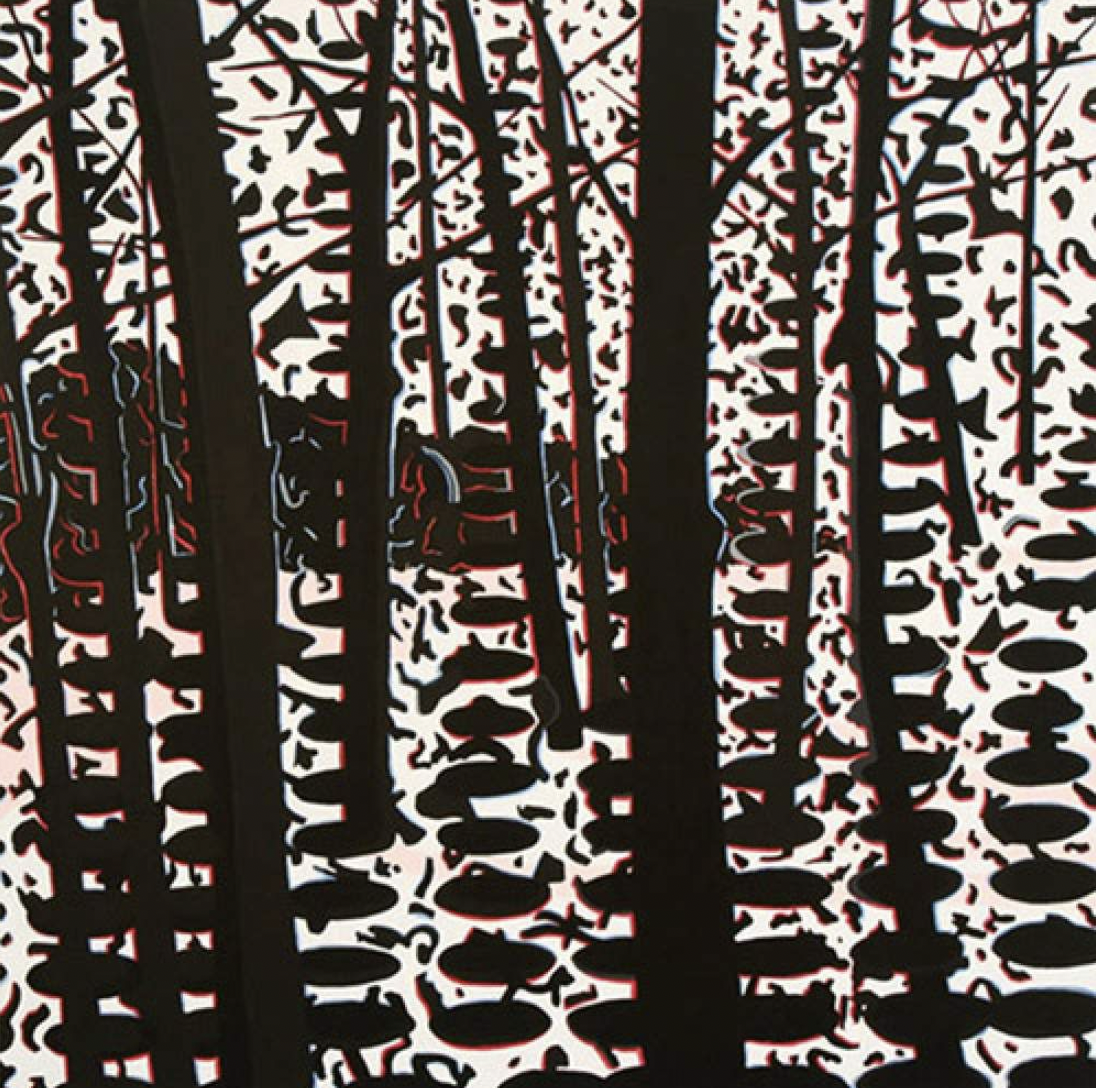
*
2.
The most important works of art I pondered throughout the process of writing the book are the reliquary sculptures of the Fang people depicted in Eternal Ancestors: The Art of the Central African Reliquary, a book that accompanied the Metropolitan Museum of Art’s 2007-2008 show of the same name. The cover images here are of, according to Harvard’s Peabody Museum, male and female reliquary guardian figures by an unknown artist of the Fang people of southern Cameroon or Equatorial Guinea.
As curator Alisa LaGamma argues in Eternal Ancestors, the relics of the Fang, Kota, and Hongwe peoples, among others of Central Africa, are the unacknowledged underpinnings of the most celebrated works of Western modernism. Picasso, Matisse, and their contemporaries marveled over and were deeply influenced by African carvings of human figures that contained (or were attached to a platform containing) sacred relics: an ancestor’s skull and other physical remains.
As I write in the book, by some accounts, the sculptures were meant to guard the bones; by others, they were intended to evoke the ancestor’s spirit. Many of the carved reliquary figures remain in the possession of museums and collectors, rather than in the hands of the descendants whose ancestors they were created to honor. Only the sculptures had value to “the late-19th-century European colonialists who first collected many of the works,” as a 2007 New York Times article puts it. The remains were usually “tossed away.” But the Metropolitan Museum of Art collection includes three figures that still include the sacred bones of ancestors.
As I write in Ancestor Trouble, all of this strikes me as an apt metaphor for the spiritual vacuum at the center of the dominant white culture in the West. Drawn to the beauty of someone else’s ancestral relics, we have taken the objects without respect for their spiritual significance, and in so doing we deprive other people of the connection with ancestors that we ourselves lack. Judging by some popular Disney movies of the last few decades—Coco, Moana, and Mulan—many of us yearn for this connection but view it as some exotic fairy tale for children.
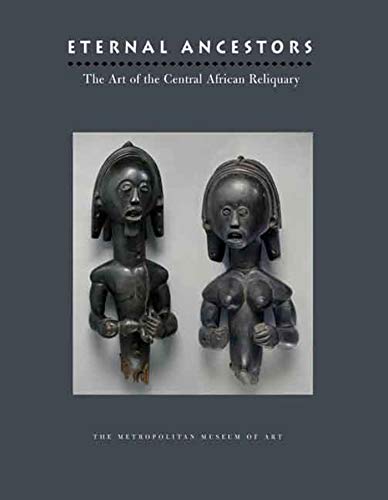
*
3.
I’ve known the artist Susan Maddux for fifteen years, give or take. When she left New York for California about a decade ago, she led the guests at her going-away party to a pile of artwork scraps she was going to put out by the curb if we didn’t take them. Among them was this eye on silky fabric, a print I’d first seen and loved at a show of hers. An inspiring and mysterious talisman, the eye hung in a frame over my desk as I wrote the book, always seeming to guide me to go deeper and be true to my best and most tender inner self. I knew from the start that Ancestor Trouble would have a spiritual component. The idea attracted and unnerved me; the eye was a calming presence.
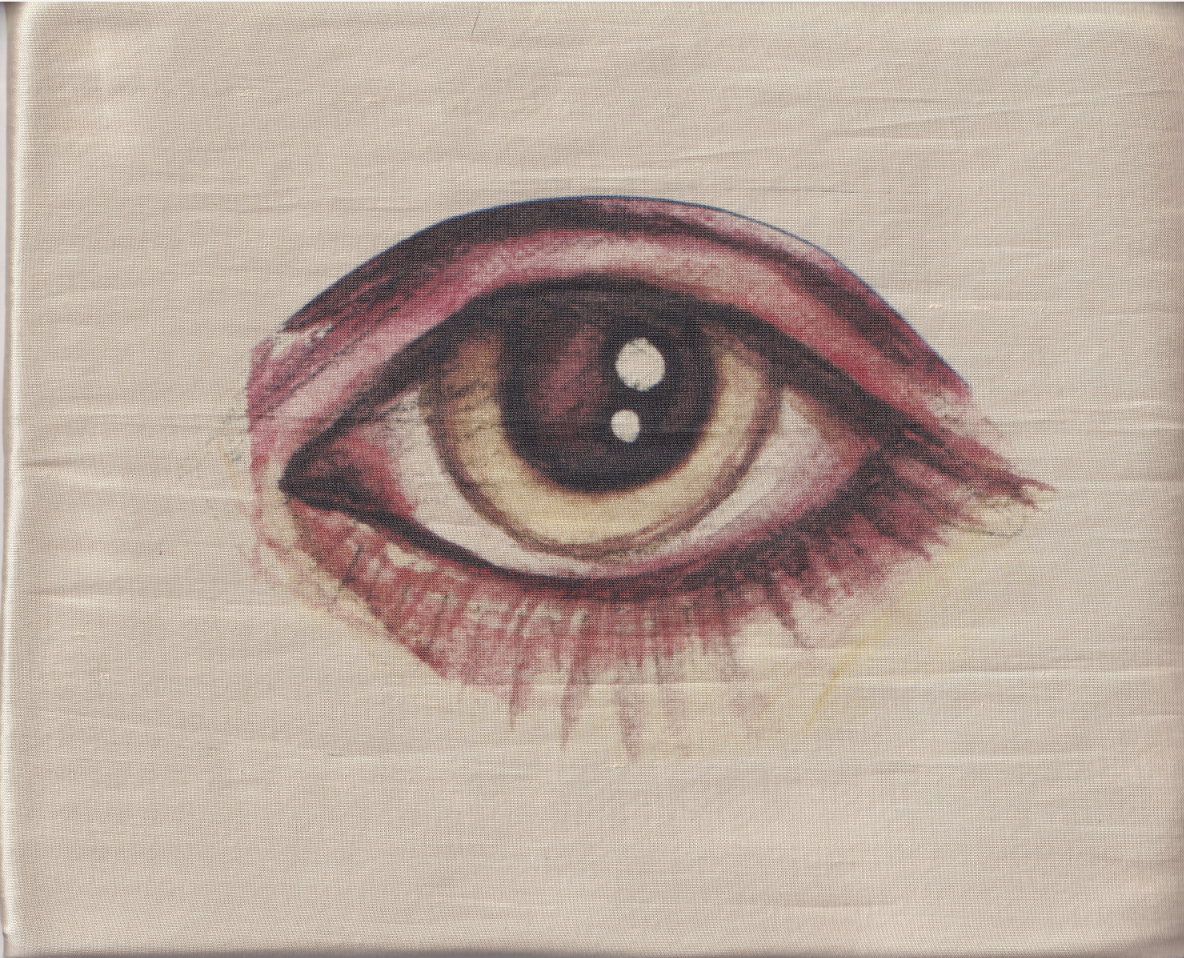
*
4.
Many old family photos have fed into my obsession with ancestors over the years. One favorite is this photograph of my great-great grandmother, Martha Caroline (Burge) Kinchen, with my beloved granny to one side and her little sister Louise to the other. No matter how many times I look at it, I’m drawn in all over again by their scowls and filthy feet, and by the family resemblance through the ages. A friend compared it to the WPA Depression photography of Dorothea Lange, but this portrait is a picture postcard. I’m not sure if the Kinchens really intended to send it in the mail or if it was meant only for posterity.
I used to see only that Martha Caroline looked forbidding—even terrifying—here, but over the years I’ve come to see a softness in her, a fierce but kind protectiveness, no doubt influenced by my mom’s recollection that Granny spoke of Martha Caroline with intense devotion.
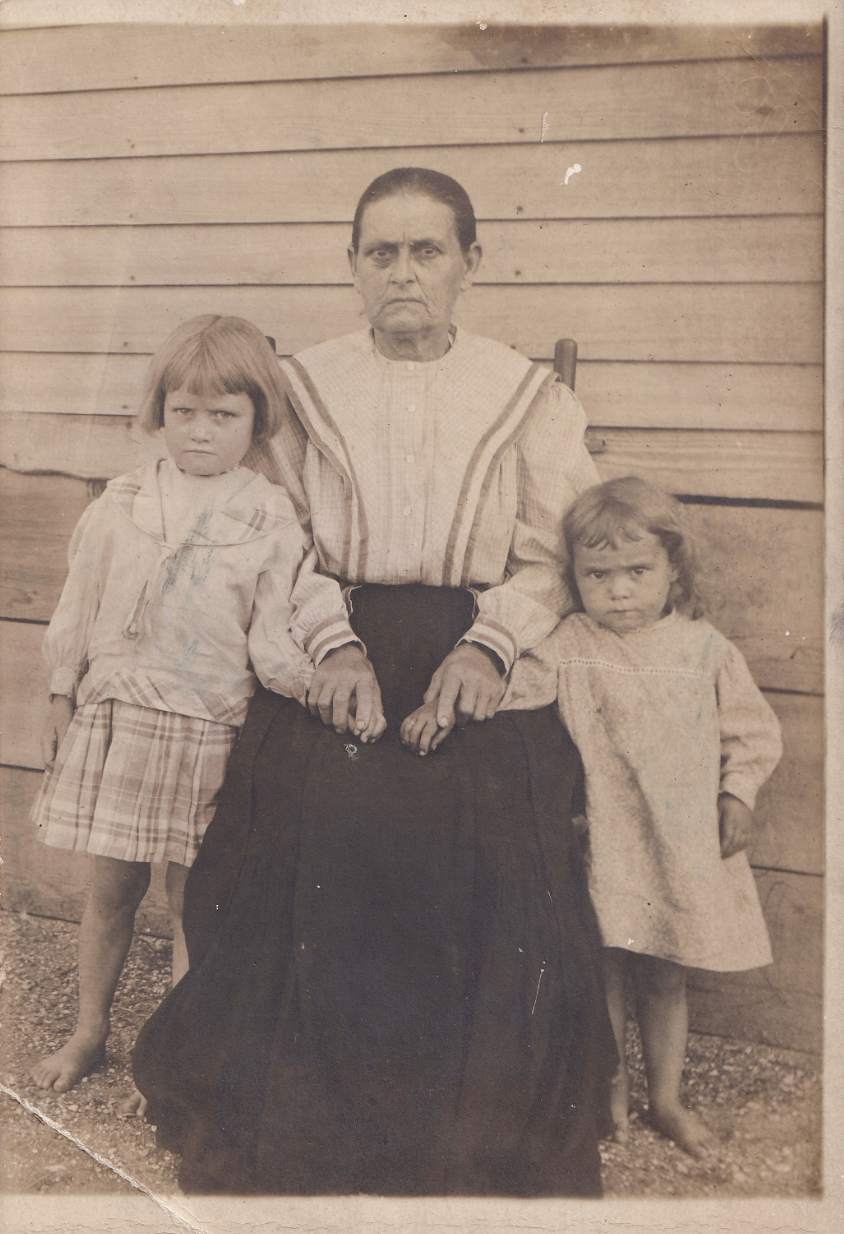
*
5.
Another photograph I return to constantly is this one of my Texan grandparents—Granny and my grandfather, Robert Bruce, who died before I was born and was said to have married thirteen times and been shot by one of his wives—taken at a then-popular Dallas restaurant called “Italian Village.” I’d guess it dates to the early days of their courtship, in 1939.
Robert sits, urbane and elaborately casual, with one elbow on the table, and one foot up on the bench or seat beside him, handsome enough to break the rules. His eyes are not those of a man who’s having a good time. Across the table, Granny is almost, if not actually, glowering. She purses her lips and directs her gaze away from Robert and the photographer both. Jaunty floral wallpaper and a shiny tabletop jukebox underscore the grimness of the occasion.
Later in life, Granny rarely drank, but here beer bottles sit open alongside their meals. She didn’t have anything nice to say about him later in life, and I’ve often wondered why she married him. I discovered many new things while writing the book, but none of them answered the question.
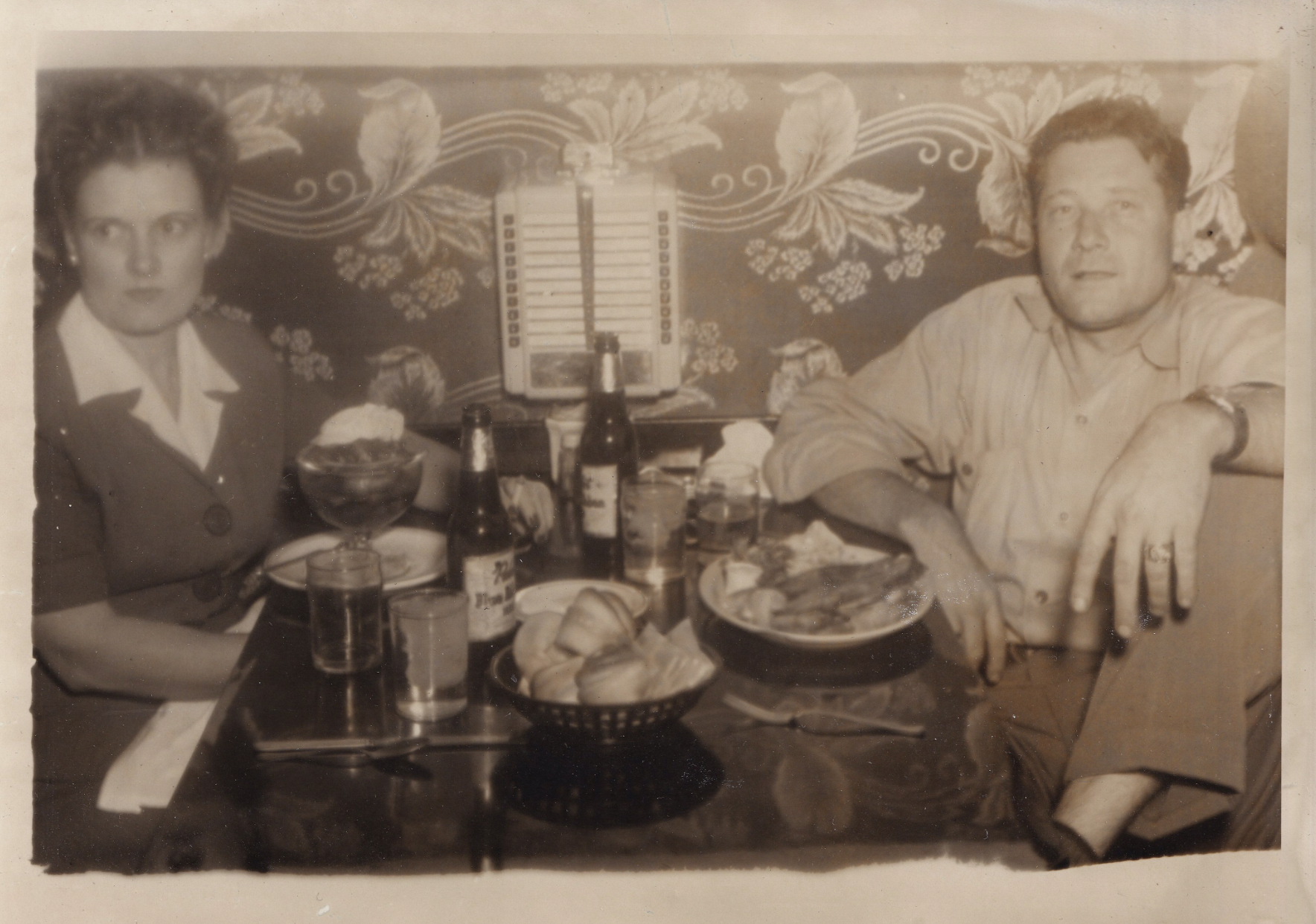
*
6.
Writing about my own ancestors had me delving into court documents from Massachusetts to Texas and many points in between. This one is a record of the testimony of my accused witch ancestor, Mary Parsons, in the lead-up to the criminal trial in which she ultimately prevailed. According to this document, her body was searched for “witch-marks.” When I first discovered Mary, and for many years afterward, I viewed her as a kind of uncomplicated hero: a woman ostracized and persecuted by townspeople who feared the strength of her personality and what they perceived as her overcloseness with animals, among other things. But ultimately she became a symbol of a truth that came up on many different lines in my research: a person can be persecuted, and also a persecutor.
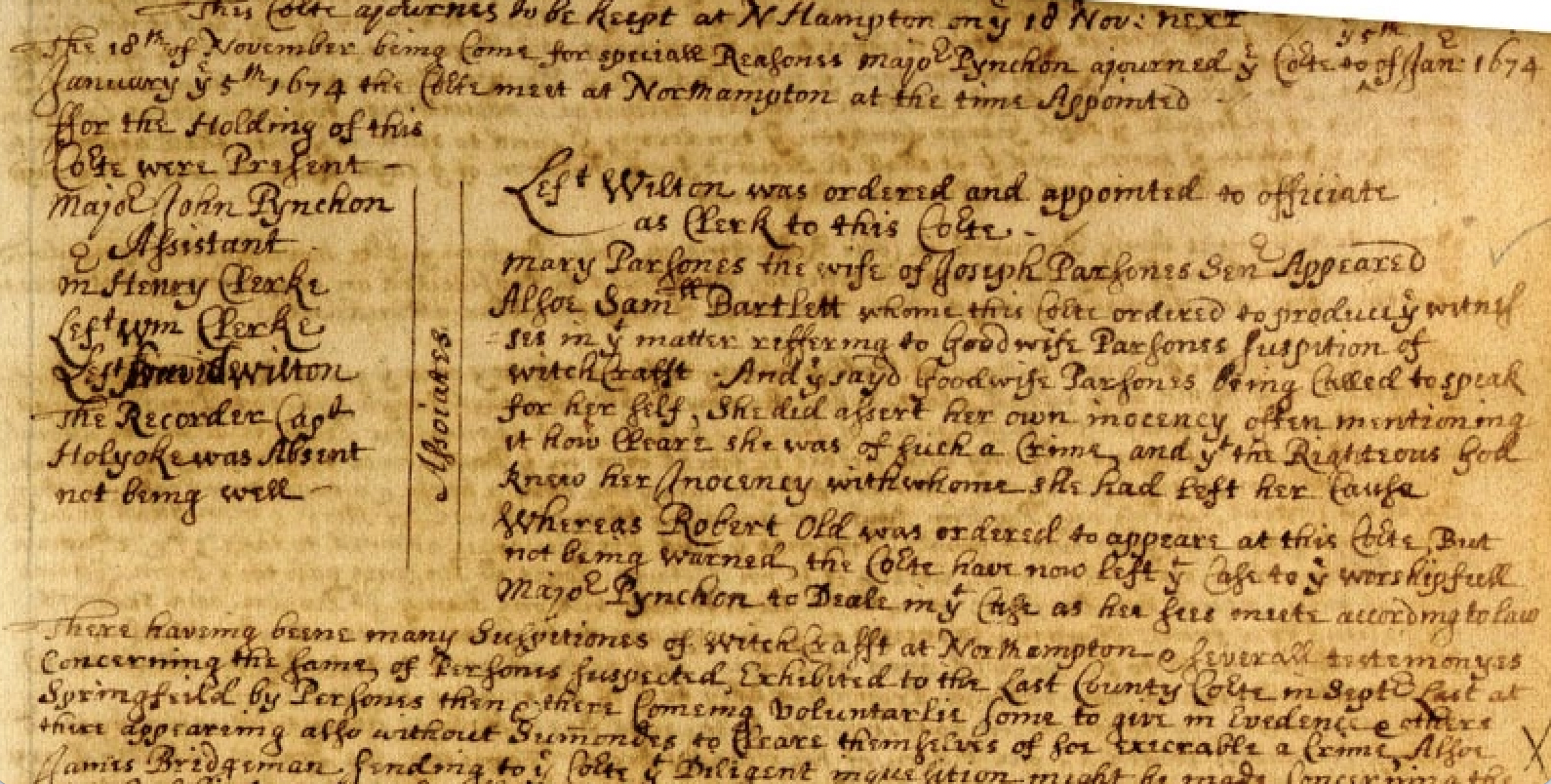
*
7.
My father was an avowed white supremacist from the Mississippi Delta who was proud that our ancestors enslaved Black people. Finding the records was a shock all the same. In this will—one of many I unearthed—my fourth great-grandfather, Joseph McGee bequeaths twelve human beings. Written in November 1850, in Holmes County, Mississippi, the will directs that all his “land, stock, and property of every description except my negroes be sold.” He goes on to provide for “five disinterested men” to “divide the following negroes” into lots to be distributed among his seven children “in such manner as for all to be made equal.” Unearthing these histories and contemplating my responsibilities around them was a big part of writing Ancestor Trouble.
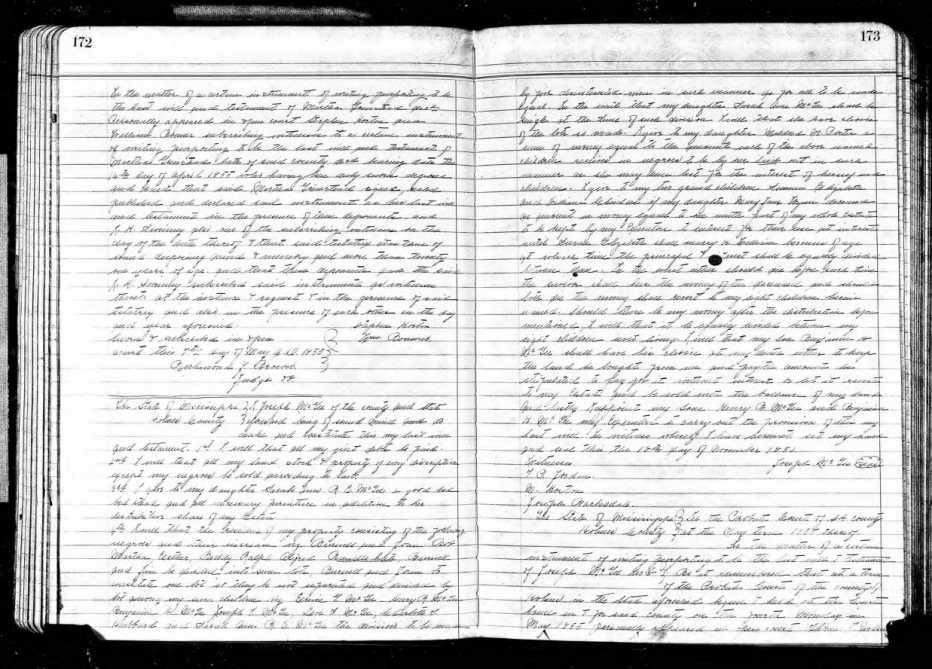
*
8.
For years I resisted writing a memoir. But over time I became increasingly interested in more distant ancestors and the ways that their actions and problems seemed to reverberate down. I only got excited at the prospect of writing a book about my extended family when I decided to let myself delve deeply into questions around ancestors more broadly: genealogy; genetics, epigenetics, and questions of nature and nurture; intergenerational trauma; racism in my family and beyond; generational wealth; spirituality; and creativity.
At times I despaired over making the different parts of the book fit together to my satisfaction. My granny’s quilts, which often incorporated bits of men’s pajamas from the Goodwill sale rack, were an inspiration when I felt stuck, reminding me that even if no one else in my family wrote a book like this, many of my people were drawn to create. The designer, Rachel Ake, drew from Granny’s quilts in turn in designing the book jacket.

*
9.
This 3D work by my partner, Maximus Clarke, hangs over our mantle. He worked on “Ayssus Abyssum Invocat,” and other images incorporating classical statuary, as I finished the final revisions to my book. Over our years together, each of our work has become more idiosyncratic and our commitment to it more intense. It’s impossible to overstate the effect on my writing of living with another artist who takes his art seriously and understands the dance between that work and holding down another job. This image feels particularly kin to my intentions for Ancestor Trouble in that it bridges antiquity and the present day, to uncanny effect.
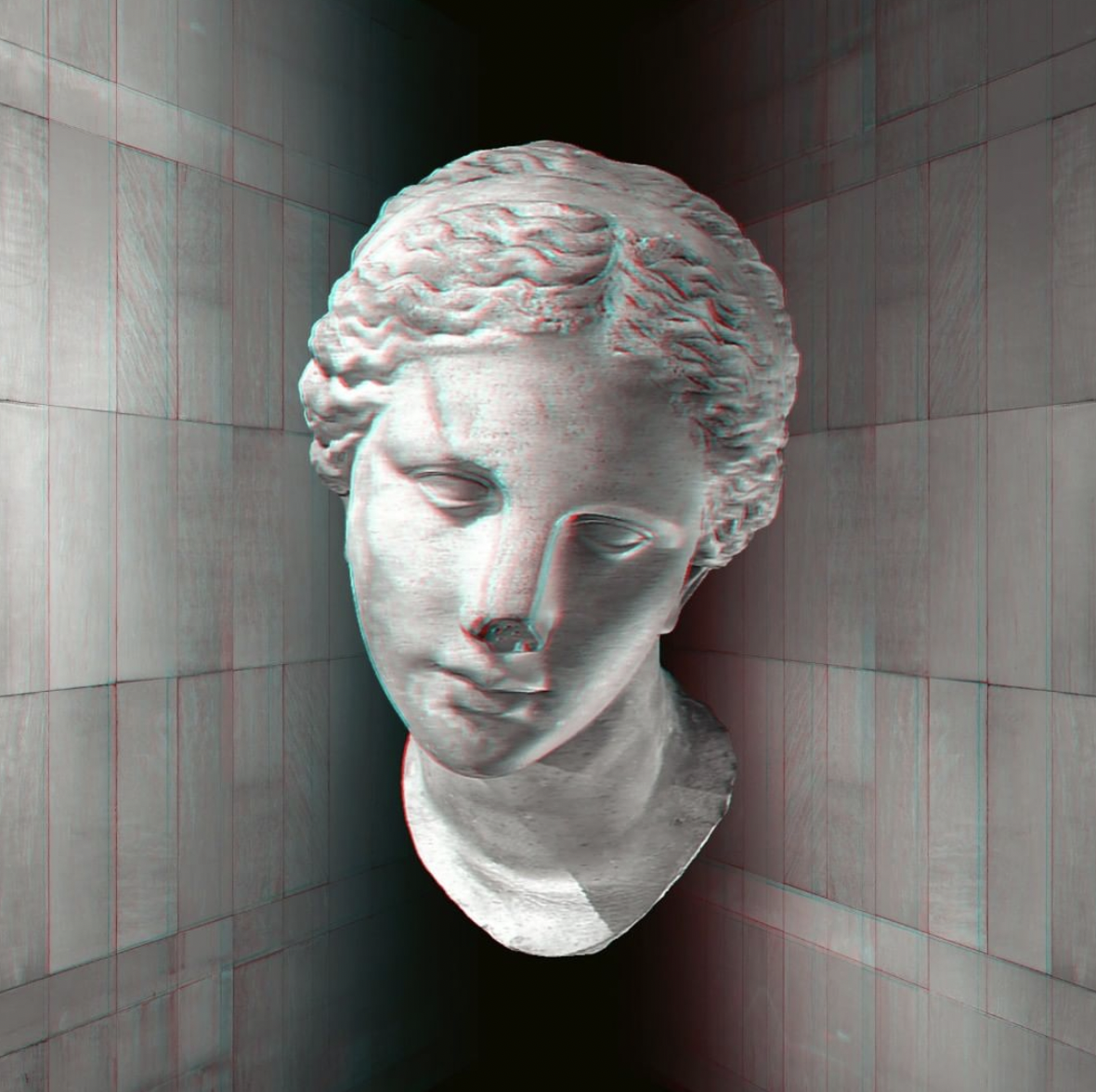
*
10.
Marie Koo’s “Bad Moon Dancing” hangs on the wall across from my bed. I was drawn to it at a benefit for the Governor’s Island Art Fair, responding to the vivid animals and lush foliage, and also to the suggestions of animist ritual and themes of death. I was interested in bringing those explorations into Ancestor Trouble but the prospect was tentative and intimidating at first, and living alongside Koo’s work helped.
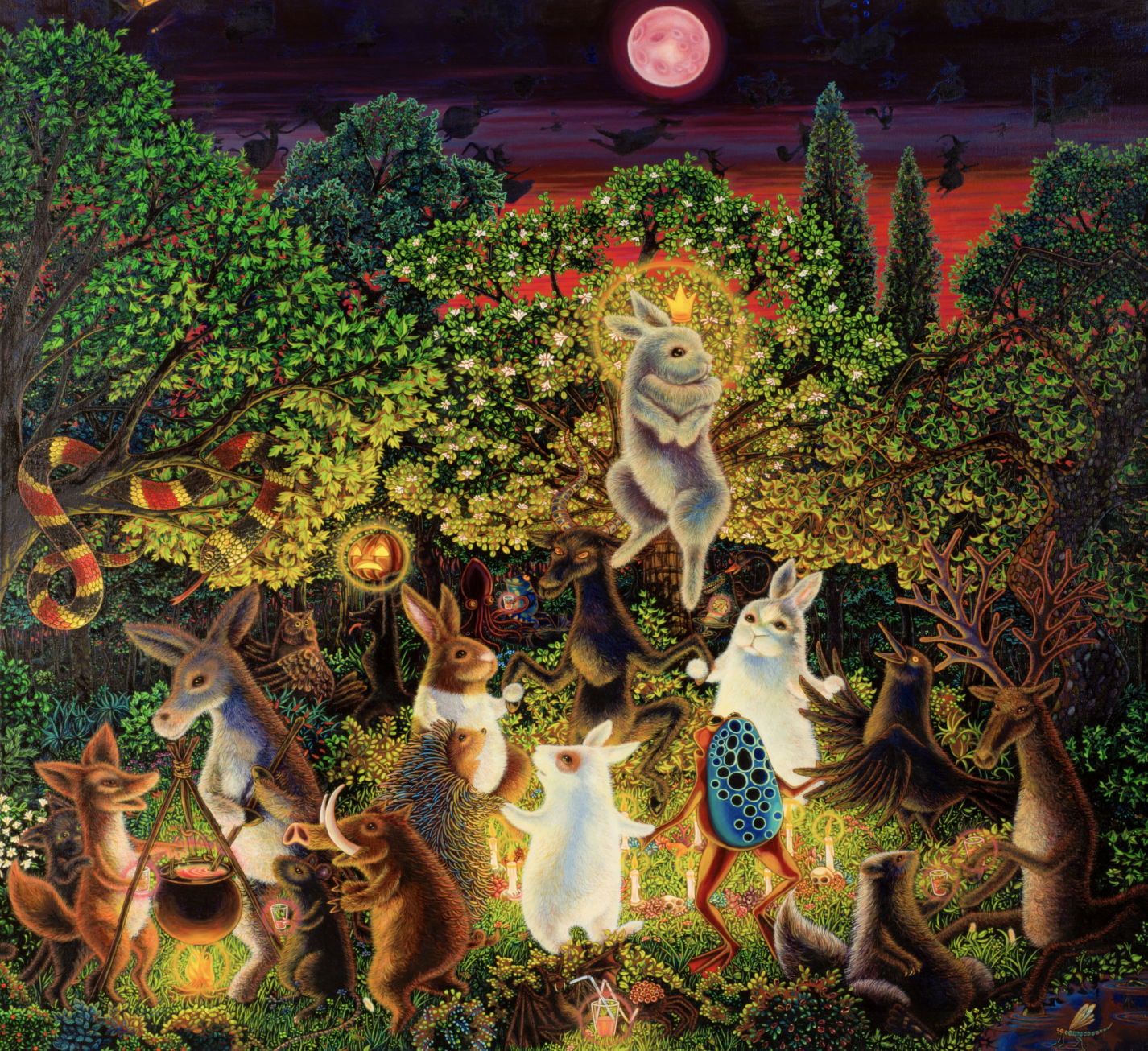
*
11.
Has it become a cliché to invoke the brilliant Hilma AF Klint and her “Altarpiece No. 1”? This piece and her entire 2018 show at the Guggenheim infused so much joy into my then-developing sense of connectedness across space and time that is very much at the heart of Ancestor Trouble. A giant poster of this piece hangs on a different wall of my bedroom, seeming to be in conversation with “Bad Moon Dancing.”
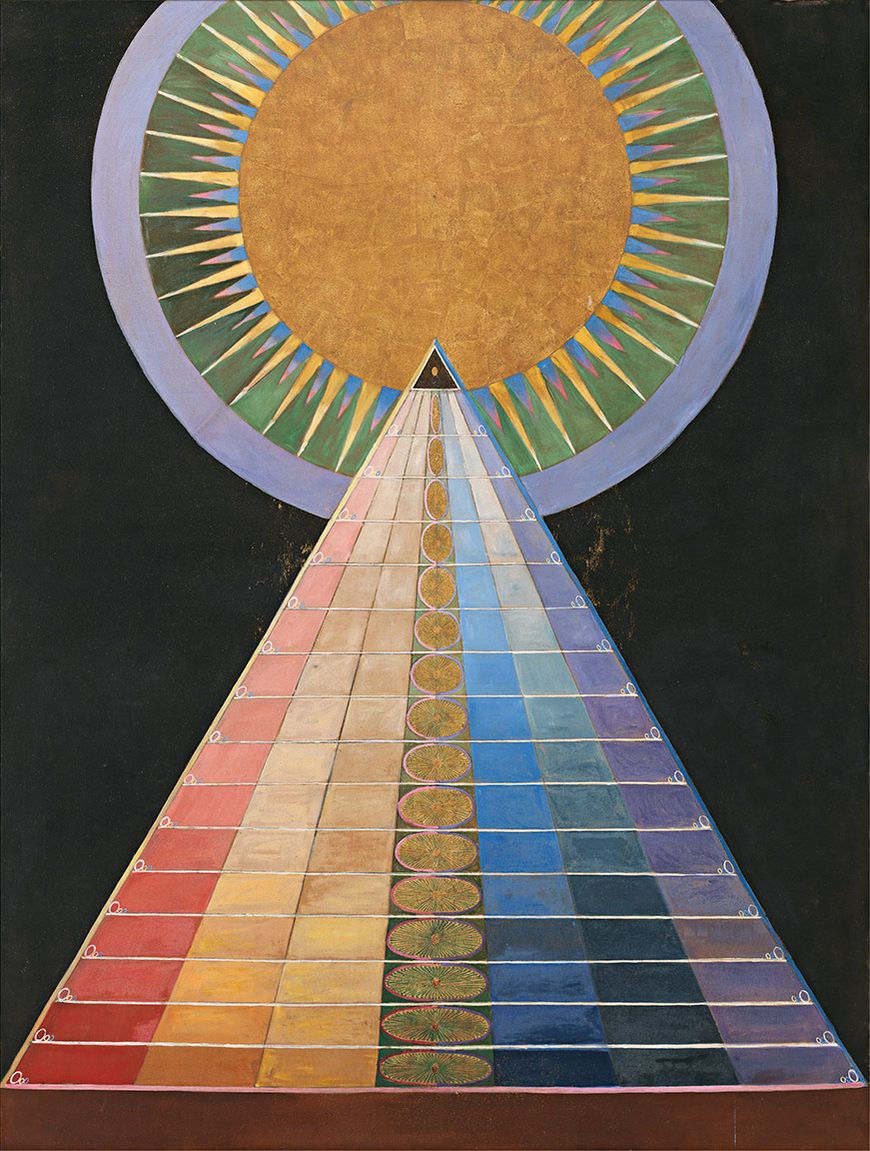
*
12.
In the Biblical Book of Genesis, Rachel steals her father’s teraphim—household gods—the existence of which are mentioned without censure. There’s substantial evidence that family religion was practiced alongside devotion to Yahweh in ancient Israel, in private at least and possibly even in public, until it became seen as a threat to the dominant religion and kings and prophets tried to stamp it out. Even those efforts were inconsistent—and, possibly as late as the first century A.D., seemingly ineffective. Chagall’s “Rachel and the Household Gods,” the artist’s imagining of the encounter between Rachel and her father after he tracks down her caravan in his search for the teraphim, was an early and consistent inspiration.
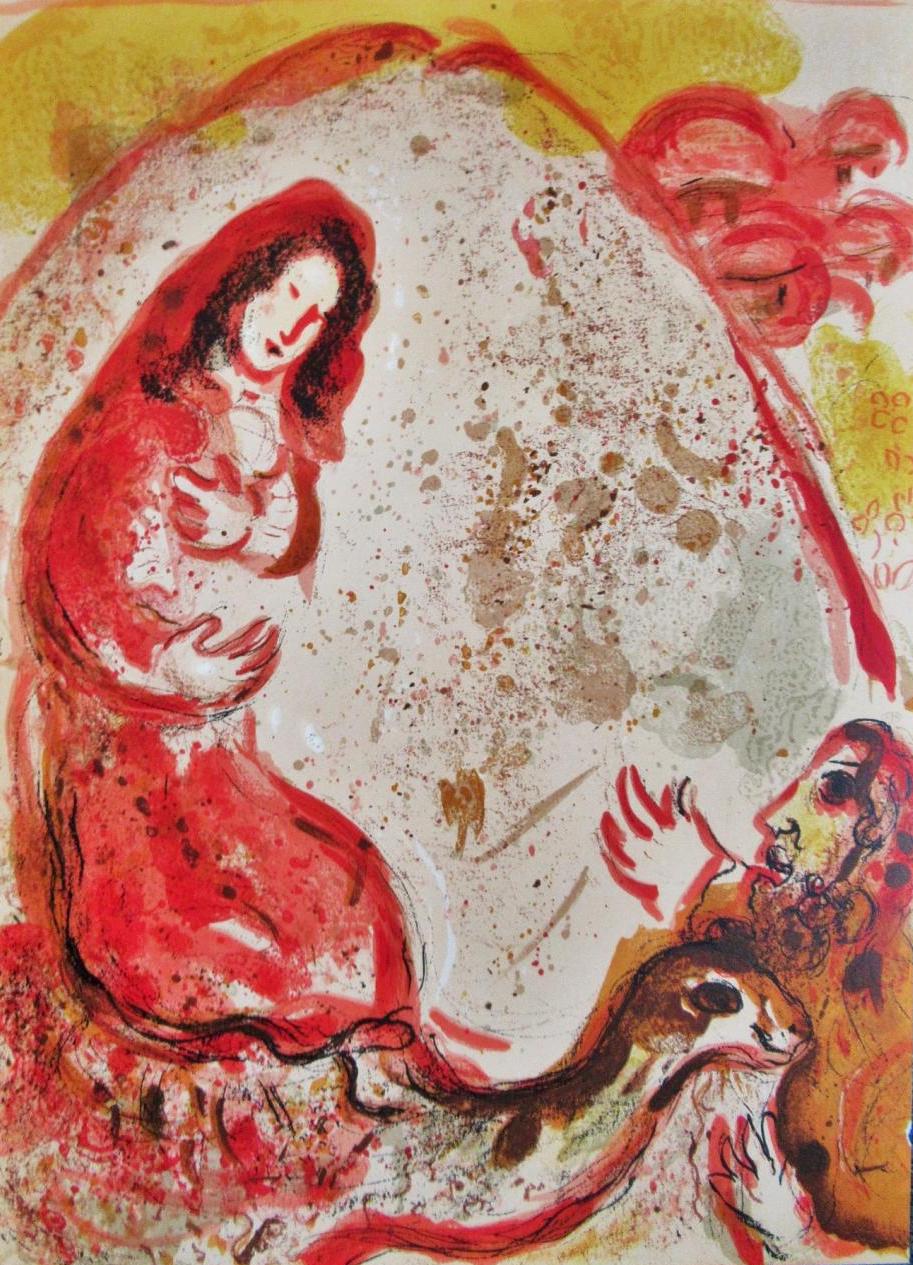
*
13.
As I imagined my ancestors in the ancient world in what we now call England and Scotland, I became interested in depictions of the natural world over time and was drawn to medieval gospels and the strange creatures tucked into ornate letters throughout many of them. This page from the Gospel of Matthew in the Lindisfarne Gospels c. 700, possibly created by Eadfrith of Lindisfarne, particularly intrigues me.
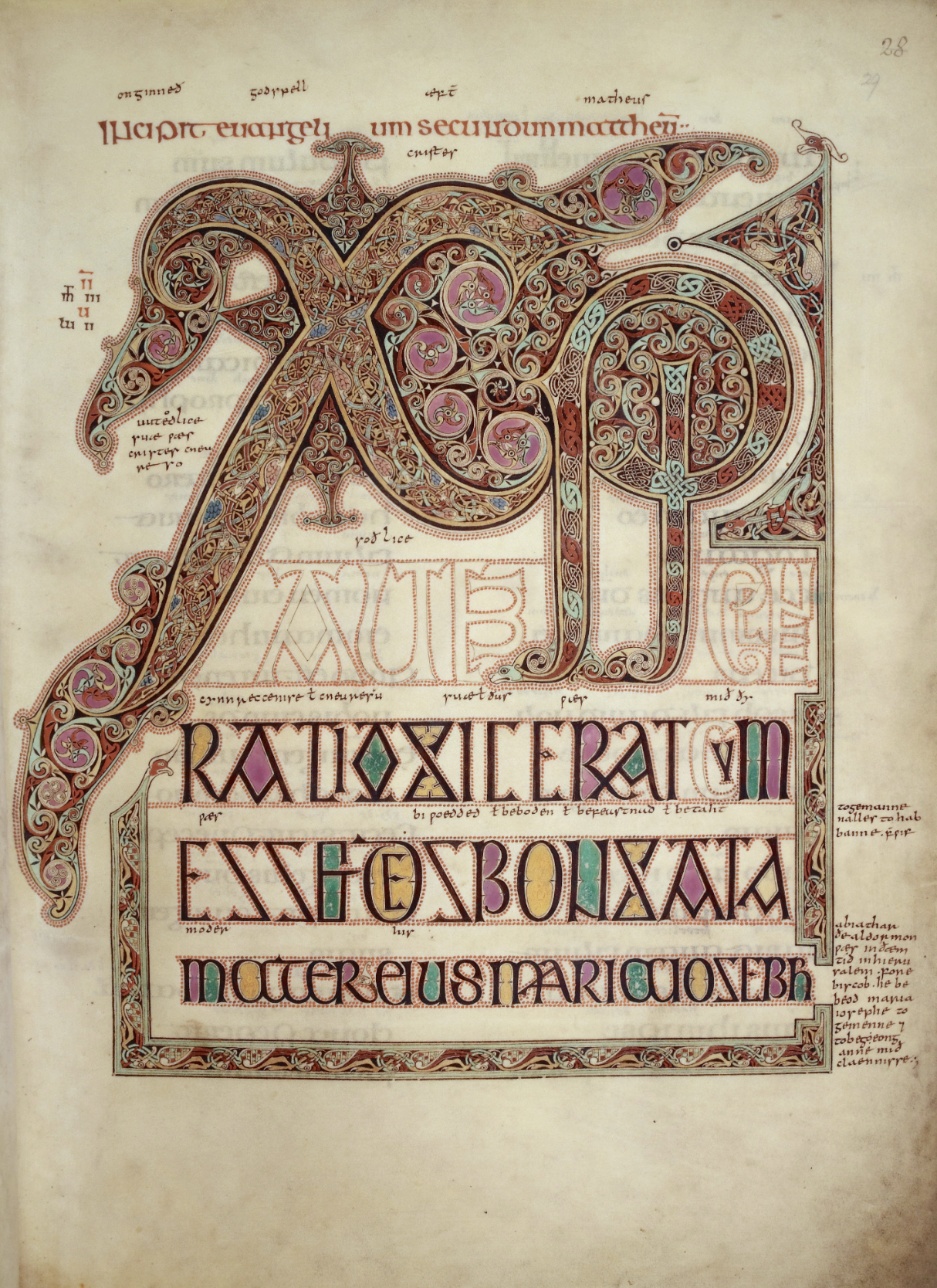
*
One more.
Ancient monuments like Stonehenge that align with seasonal astronomical phenomena are some of the most magical and most grounding human creations—as are standing stones to commemorate the dead, which the stones of Stonehenge arguably, if not obviously, are.
While I was finishing up the book, the discovery came that the massive bluestones at Stonehenge came from somewhere else, possibly a stone circle in Wales. This discovery, in combination with isotopes from cremated remains found at Stonehenge, led the lead researcher to conclude that Stonehenge was constructed to commemorate the ancestors of the original people who lived there. Others scoff at this interpretation of the existing evidence. As I note in a footnote to the book, it’s hard to imagine what, short of a sign saying, “this site was used for ancestor veneration,” would satisfy skeptics; at the same time, it’s true that there is no definitive evidence of the purpose of these particular standing stones in this particular part of the world where these particular remains were carefully moved from elsewhere and buried.
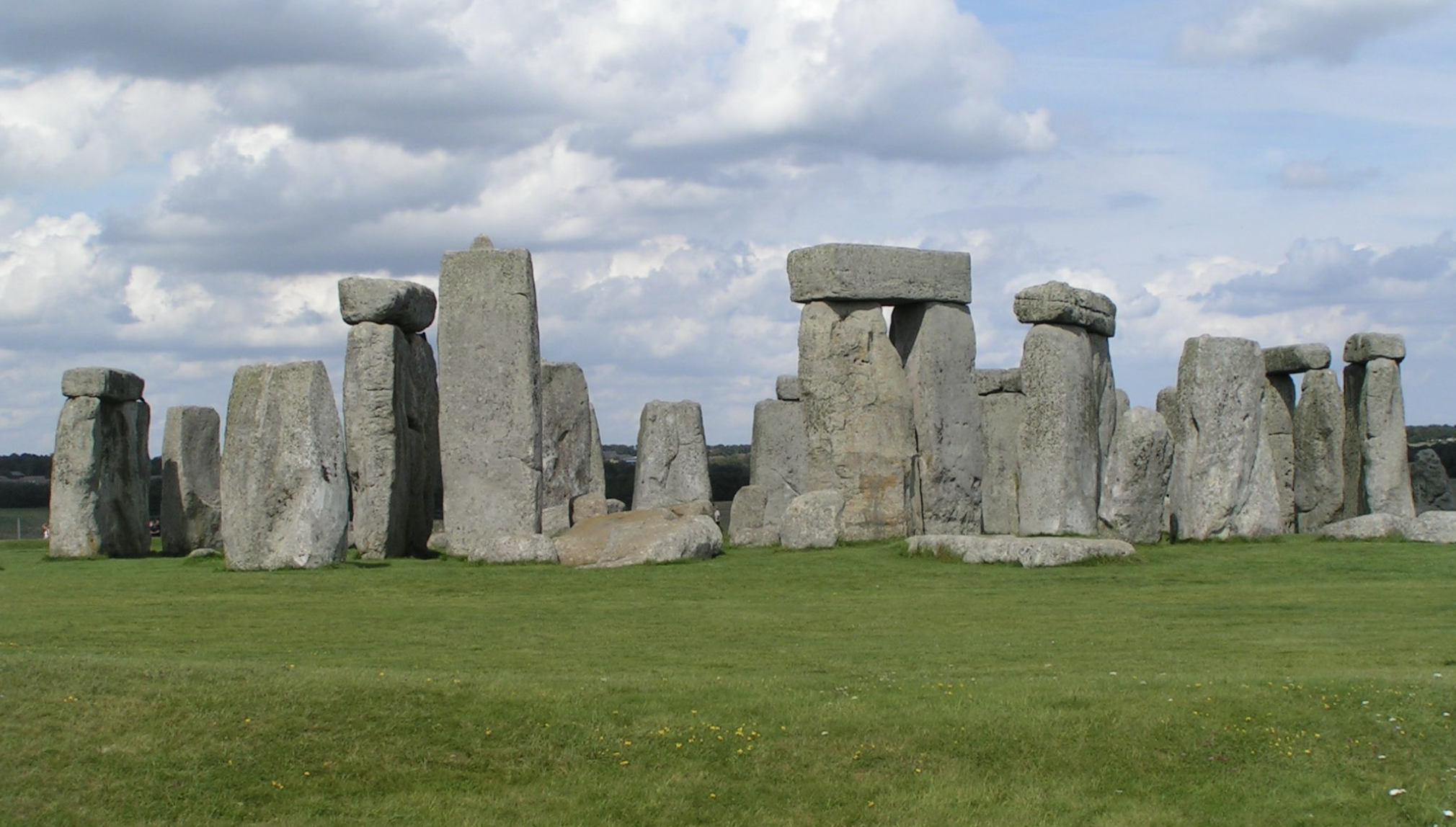
Maud Newton
Maud Newton has written for The New York Times Magazine, Harper’s, The New York Times Book Review, and Oxford American. She grew up in Miami and graduated from the University of Florida with degrees in English and law. Photo by Maximum Clarke.












